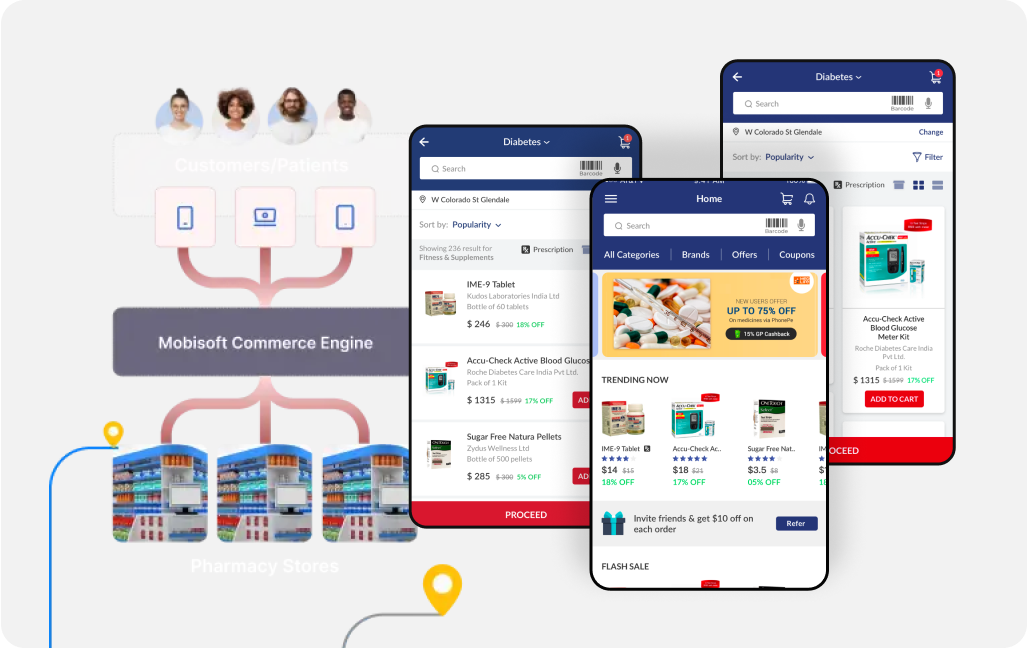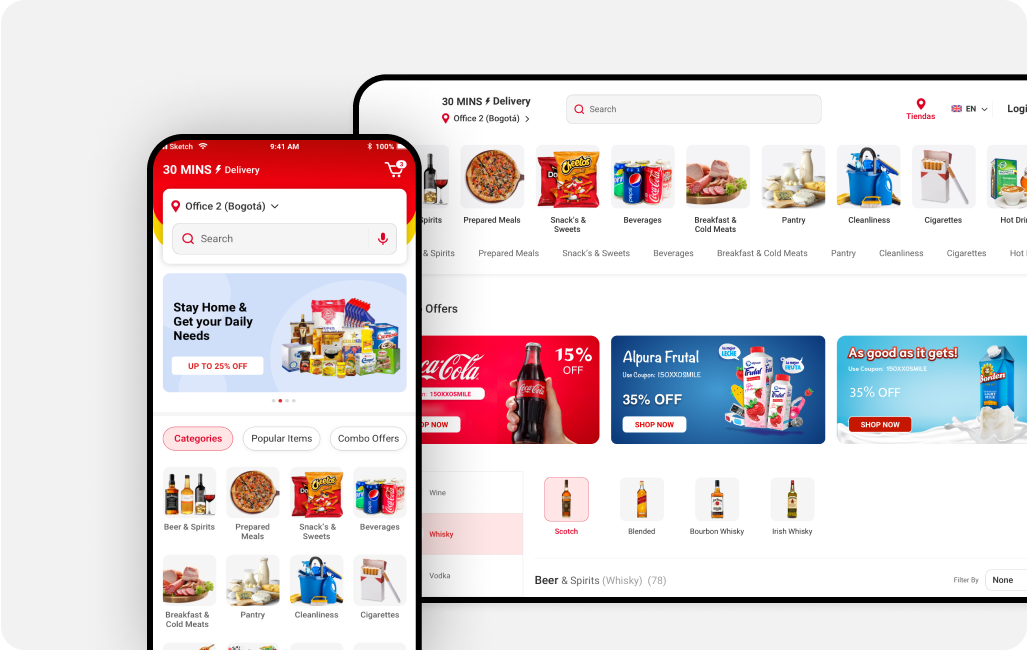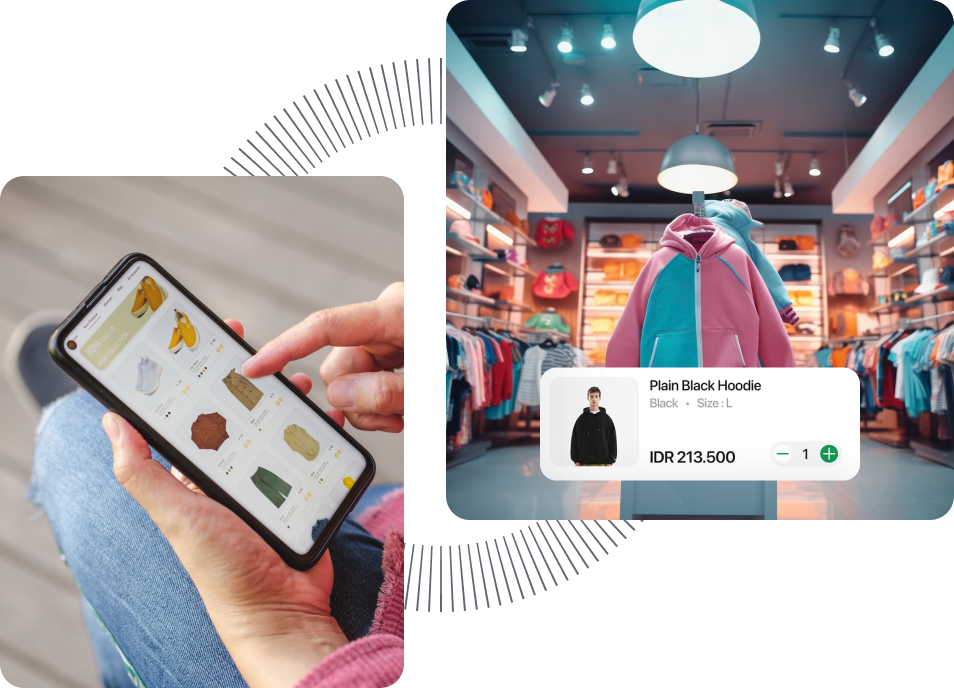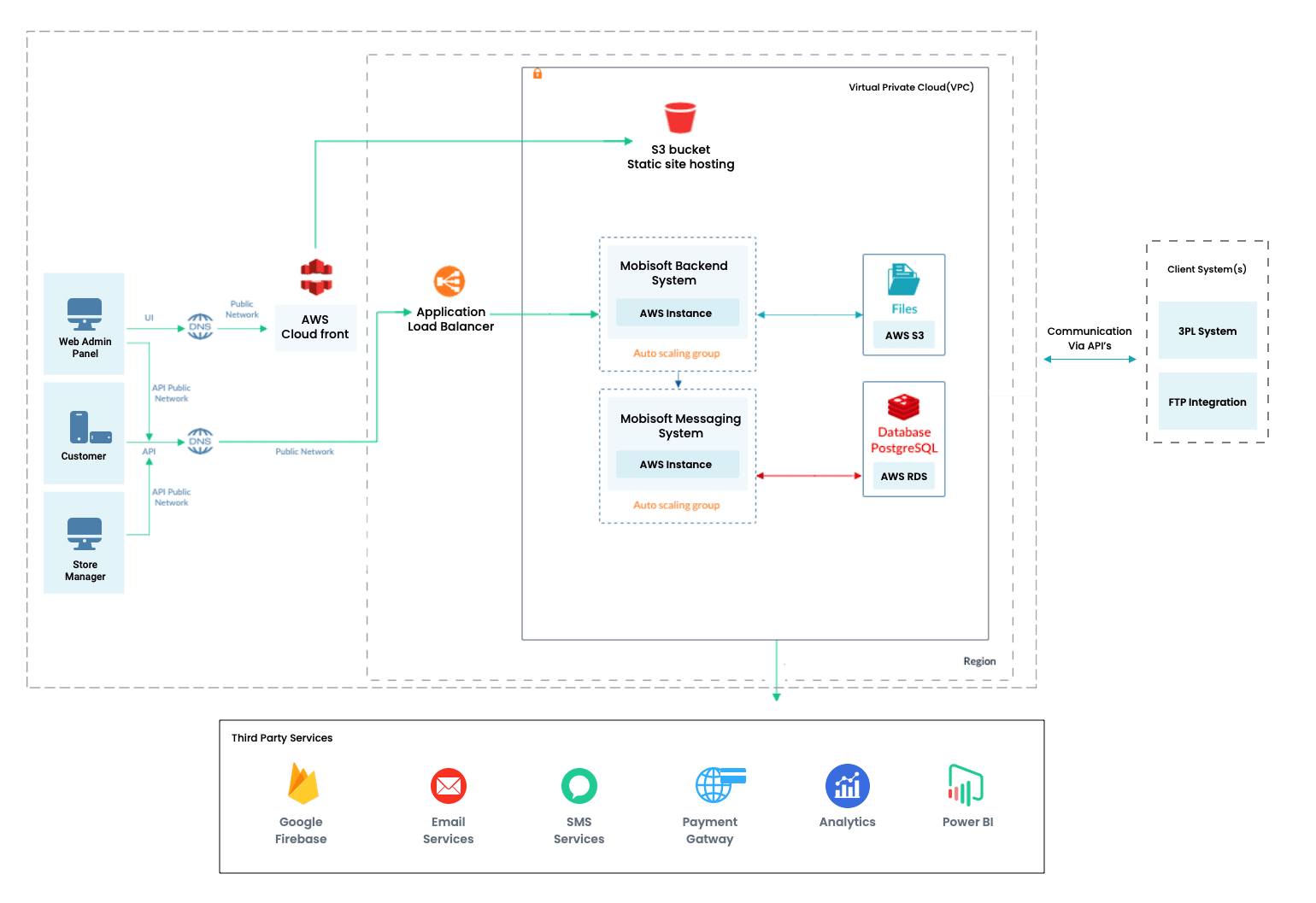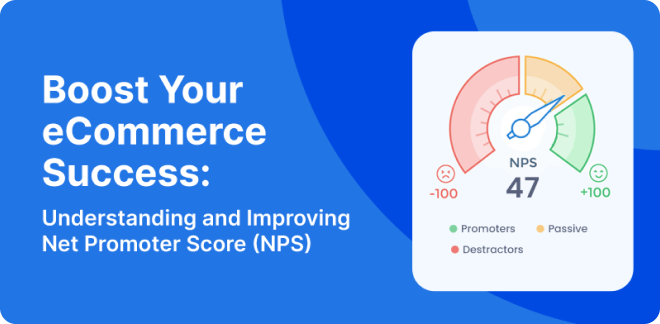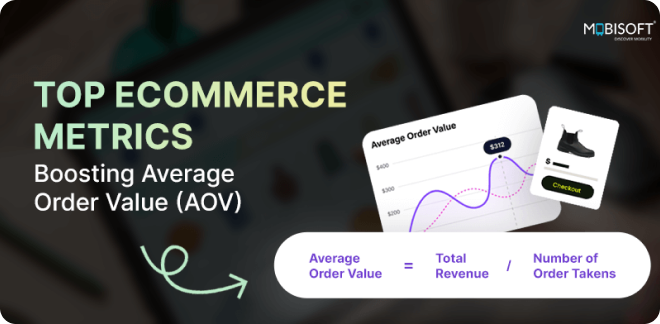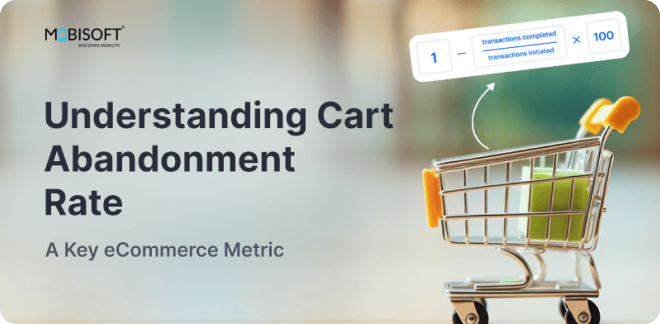If you are an ecommerce entrepreneur, then it’s imperative that you have full control and
visibility over every aspect of your business. Often, off-the-shelf ecommerce platforms fall
short of
meeting the unique needs of businesses striving for distinction and scalability.
This is where custom ecommerce development services step in, offering tailored solutions that
align perfectly with your business model, brand identity, and growth aspirations.
Why Custom Ecommerce Solutions?
Custom ecommerce solutions are not just a luxury; they're a strategic necessity for
businesses looking to thrive in the competitive online marketplace. By opting for
customization, you gain the power to create a unique shopping experience that resonates with
your target audience, streamlines your operations, and gives you a competitive edge.
The importance of custom ecommerce development services lies in their ability to:
- Provide Flexibility: Adapt quickly to market changes and evolving customer needs.
- Ensure Scalability: Grow your platform in tandem with your business without
constraints, making it ideal for scalable ecommerce platforms.
- Enhance User Experience: Create intuitive, brand-specific interfaces that drive
conversions, ensuring a superior custom ecommerce experience.
- Integrate Seamlessly: Connect effortlessly with existing systems and third-party
services like payment gateways or CRMs, allowing for easy and efficient ecommerce
integration services.
- Optimize Performance: Fine-tune your store for speed, security, and reliability,
with custom ecommerce optimization services ensuring top-notch site performance.
- Enable Innovation: Implement cutting-edge features, like AI-powered ecommerce
solutions, that set you apart from competitors.
As we delve deeper into the world of custom ecommerce solutions, we'll explore the technology
stack, design principles, development approaches, and best practices that form the
foundation of successful online stores. Whether you're a startup looking to make a splash or
an established brand aiming to reinvent your digital presence, this guide will provide you
with the insights needed to navigate the custom ecommerce development landscape effectively.
Mobisoft’s Custom Ecommerce Solution Architecture
![Mobisoft’s Custom Ecommerce Solution Architecture Mobisofts Custom Ecommerce Solution Architecture]()
Tech Stack for Ecommerce Development Services
The backbone of any custom e-commerce development services is its technology stack. Choosing
the right combination of technologies is crucial for creating a scalable, secure, and
high-performing ecommerce platform. Here's an in-depth look at the key components of a
modern ecommerce tech stack:
Frontend Technologies
1. JavaScript Frameworks:
- React.js: Offers a component-based architecture for building custom ecommerce
UIs.
- Vue.js: Known for its simplicity and performance in creating dynamic
ecommerce frontends.
- Angular: Provides a full-fledged framework for building enterprise ecommerce
applications.
2. CSS Frameworks and Preprocessors:
-
Sass or Less: Enhance CSS with variables, nesting, and mixins for
maintainable ecommerce stylesheets.
-
Tailwind CSS: Utility-first framework for rapid custom ecommerce UI
development.
-
Bootstrap: Responsive design framework for consistent ecommerce experiences
across devices.
3. State Management:
-
Redux or MobX: For efficient state management in large-scale ecommerce
applications.
-
Vuex: State management pattern library for Vue.js ecommerce applications.
Backend Technologies
1. Programming Languages:
-
Node.js: JavaScript runtime for building scalable ecommerce
applications.
-
Python: Versatile language with frameworks like Django and Flask, ideal
for custom e-commerce development services.
-
PHP: Widely used for ecommerce with frameworks like Laravel and Symfony
for enterprise ecommerce development.
-
Java: Enterprise-grade language with Spring framework for building
robust ecommerce backend systems.
2. Databases:
-
MySQL or PostgreSQL: Relational databases for structured ecommerce data
storage.
-
MongoDB: NoSQL database for flexible ecommerce data models.
-
Redis: In-memory data structure store for real-time ecommerce
operations.
3. APIs and Microservices:
-
RESTful APIs: For standardized communication between ecommerce frontend
and backend.
-
GraphQL: Query language for ecommerce APIs, allowing clients to request
exactly what they need.
Ecommerce-Specific Technologies
1. Ecommerce Platforms and Frameworks:
-
Magento: Open-source platform with custom ecommerce development and
extensive customization capabilities.
-
Shopify & Shopify Plus: From startups to enterprise ecommerce
development services, powered with AI and automation solutions for scalable
ecommerce platforms.
2. Payment Gateways:
-
Stripe: Developer-friendly payment processing platform.
-
PayPal: Widely recognized payment solution with extensive APIs.
-
Square: Integrated payment and point-of-sale solutions.
3. Search and Recommendation Engines:
- Elasticsearch: Distributed search and analytics engine for personalized
ecommerce experiences.
- Algolia: Hosted search engine with advanced ecommerce features like
personalization.
DevOps and Infrastructure
1. Cloud Platforms:
- AWS (Amazon Web Services): Comprehensive cloud computing services for
scalable ecommerce solutions.
- Google Cloud Platform: Scalable cloud infrastructure with a focus on
machine learning and ecommerce AI solutions.
- Microsoft Azure: Enterprise-grade cloud platform for secure ecommerce
infrastructure.
2. Containerization and Orchestration:
- Docker: Platform for developing, shipping, and running ecommerce
applications in containers.
- Kubernetes: Container orchestration system for automating ecommerce
deployments and scaling.
3. CI/CD Tools:
- Jenkins: Open-source automation server for building, deploying, and
automating ecommerce projects.
- GitLab CI: Integrated CI/CD pipeline tool within the GitLab ecosystem.
4. Monitoring and Analytics:
- New Relic: Application performance monitoring and observability platform
for ecommerce infrastructure.
- Prometheus: Open-source monitoring and alerting toolkit for custom
ecommerce solutions.
By carefully selecting and integrating these technologies, we create a robust
foundation for your custom ecommerce solution. This tech stack enables us to build
scalable, secure, and high-performing ecommerce stores that can handle the
complexities of modern ecommerce operations while providing a seamless shopping
experience for your customers.
We Follow Human-Centric UI/UX Fundamentals
In the age of mobile-first ecommerce shopping, creating a user experience that
resonates with human behavior and expectations is paramount. Our approach to
ecommerce UX design is deeply rooted in human-centric principles, ensuring that
every interaction with your custom ecommerce platform is intuitive, engaging, and
satisfying. Here’s how we implement these fundamentals:
1. Responsive Design with Mobile Priority
- Implement fluid layouts that adapt seamlessly to various screen sizes.
- Prioritize content and features for mobile users without sacrificing desktop
functionality, ensuring an optimized custom ecommerce experience.
-
Utilize touch-friendly interface elements with appropriate sizing and spacing
for better user engagement.
2. Intuitive Navigation and Information Architecture
-
Create clear, logical menu structures that guide users effortlessly through your
custom ecommerce store.
-
Implement smart search functionality with autocomplete and filters for quick
product discovery.
-
Use breadcrumbs and consistent back navigation to prevent user disorientation,
improving the user experience.
3. Streamlined Checkout Process
- Minimize form fields and implement guest checkout options to reduce friction.
- Provide clear progress indicators and allow users to easily edit their cart.
- Offer multiple payment options, including integrated ecommerce payment gateways,
and clearly display security assurances.
4. Performance Optimization for Rapid Loading
- Implement lazy loading techniques to prioritize above-the-fold content.
- Optimize images and utilize content delivery networks (CDNs) for faster page
loads.
- Minimize HTTP requests and leverage browser caching for repeat visitors,
improving site speed and overall ecommerce performance optimization.
5. Personalization and Contextual Experiences
- Utilize AI and machine learning to offer personalized product recommendations.
- Implement location-based services for relevant shipping information and local
offerings.
- Provide a consistent, omnichannel experience across devices and platforms for a
more seamless ecommerce experience.
6. Accessibility and Inclusive Design
- Follow WCAG guidelines to ensure your store is accessible to users with
disabilities.
- Implement proper color contrast and text sizing for improved readability.
- Provide alternative text for images and ensure keyboard navigation
functionality, enhancing the overall user experience for all shoppers.
7. Emotional Design and Brand Consistency
- Use color psychology and visual hierarchy to guide user attention and evoke
desired emotions.
- Maintain consistent branding elements across all touchpoints for a cohesive
experience.
- Incorporate micro-interactions and animations to provide feedback and delight
users, enhancing the emotional connection with your brand.
8. User Feedback and Iterative Improvement
- Implement user testing and gather feedback through surveys and analytics.
- Continuously analyze user behavior and pain points for ongoing ecommerce UX
optimization.
- Embrace an agile approach to UX design, making iterative improvements based on
real-world usage.
By adhering to these human-centric mobile UX fundamentals, we create ecommerce
experiences that not only meet but exceed user expectations. This approach leads to
increased engagement, higher conversion rates, and ultimately, a stronger connection
between your brand and your customers.
Our Approach to Gather Requirements for Ecommerce Projects
Gathering comprehensive and accurate requirements is the cornerstone of successful
custom ecommerce development. Our approach is methodical, collaborative, and
iterative, ensuring that we capture not just the technical specifications but also
the business goals and user needs. Here's an overview of our requirement gathering
process:
1. Initial Consultation and Discovery
- Conduct in-depth interviews with key stakeholders to understand business
objectives.
- Analyze existing systems, processes, and pain points to tailor a custom
ecommerce solution.
- Identify target audience segments and their specific needs.
2. Market and Competitor Analysis
- Research industry trends and best practices in custom ecommerce development.
- Analyze competitor offerings to identify opportunities for differentiation.
- Gather insights on customer expectations within your niche to ensure ecommerce
differentiation.
3. User Research and Persona Development
- Conduct user surveys and interviews to understand shopping behaviors and
preferences.
- Create detailed user personas to guide UX design and functionality decisions.
- Map out user journeys to identify critical touchpoints and key requirements for
optimal custom ecommerce user experience.
4. Functional Requirement Workshops
- Organize collaborative sessions with stakeholders to define core
functionalities.
- Use techniques like user story mapping to prioritize features that ensure
seamless ecommerce integration services.
- Document detailed use cases for key user interactions.
5. Technical Requirement Analysis
- Assess existing IT infrastructure and ecommerce integration needs.
- Determine scalability requirements based on projected growth to ensure a
scalable ecommerce platform.
- Identify security and compliance requirements specific to your industry.
6. Prototyping and Visual Design Concepts
- Create wireframes and interactive prototypes to visualize key user flows.
- Develop mood boards and style guides to align on visual design direction.
- Iterate on design concepts based on stakeholder and user feedback to create an
engaging custom ecommerce platform.
7. Data Migration and Integration Planning
- Analyze existing data structures and plan for smooth migration.
- Identify third-party systems that need integration (ERP, CRM, etc.) and ensure
seamless custom ecommerce integration.
- Define API requirements for smooth data flow between systems.
8. Performance and Scalability Requirements
- Define performance benchmarks, including page load times and concurrent users.
- Establish scalability goals to accommodate future growth, ensuring custom
ecommerce optimization.
- Determine hosting and infrastructure requirements to support high performance.
9. Security and Compliance Specifications
- Identify industry-specific compliance requirements, such as PCI DSS for payment
processing.
- Define security measures for data protection and fraud prevention in your custom
ecommerce solution.
- Establish protocols for user authentication and authorization.
10. Maintenance and Support Planning
- Define post-launch support requirements and service level agreements (SLAs).
- Plan for regular updates and feature enhancements to maintain your custom
ecommerce platform.
- Establish monitoring and reporting requirements for ongoing ecommerce
performance optimization.
11. Requirement Validation and Sign-off
- Conduct thorough reviews of gathered requirements with all stakeholders.
- Prioritize requirements using techniques like MoSCoW (Must have, Should have,
Could have, Won't have).
- Obtain formal sign-off on the final requirement document to ensure alignment.
By following this comprehensive approach to requirement gathering, we ensure that
every aspect of your custom ecommerce development is thoroughly planned and aligned
with your business objectives. This meticulous process sets the foundation for a
successful development phase and ultimately delivers a custom ecommerce platform
that exceeds your expectations.
How We Secure Data
Data security is paramount in Shopify ecommerce, where sensitive customer information
and financial transactions are handled daily. Our approach to securing data is
multi-layered, comprehensive, and adheres to the highest industry standards. Here's
an overview of how we ensure the utmost protection for your Shopify ecommerce
platform data:
1. Encryption at Rest and in Transit
- Implement SSL/TLS encryption for all data transmitted between users and the
server of your Shopify store.
- Use strong encryption algorithms (e.g., AES-256) for data stored in Shopify
ecommerce databases.
- Employ secure key management practices to protect encryption keys within your
Shopify platform.
2. Secure Authentication and Authorization
- Implement multi-factor authentication (MFA) for user accounts and admin access
to your Shopify ecommerce platform.
- Use OAuth 2.0 and OpenID Connect for secure, token-based authentication within
your Shopify ecommerce environment.
- Enforce strong password policies and regular password rotations for Shopify app
access.
3. Data Anonymization and Pseudonymization
- Anonymize personally identifiable information (PII) for Shopify ecommerce
customers when full identification is not necessary.
- Use pseudonymization techniques to replace sensitive data with reversible,
artificial identifiers in your Shopify store.
4. Regular Security Audits and Penetration Testing
- Conduct periodic security audits to identify vulnerabilities within your Shopify
ecommerce platform.
- Perform regular penetration testing to simulate real-world attack scenarios on
your Shopify store.
- Implement continuous security monitoring for early threat detection on your
Shopify platform.
5. Secure Development Practices
- Follow secure coding guidelines to prevent common vulnerabilities (e.g., SQL
injection, XSS) in Shopify ecommerce development.
- Implement code review processes with a focus on security for all Shopify app
development.
- Use automated security scanning tools in the Shopify development pipeline.
6. Data Access Controls
- Implement role-based access control (RBAC) to limit data access based on user
roles within the Shopify ecommerce platform.
- Use the principle of least privilege to minimize unnecessary data exposure in
your Shopify store.
- Maintain detailed logs of all data access and modifications across your Shopify
ecommerce solution.
7. Secure Data Backup and Recovery
- Implement regular, encrypted backups of all critical data in your Shopify
platform.
- Store backups in geographically diverse locations for disaster recovery of your
Shopify store.
- Regularly test data restoration processes to ensure recoverability within your
Shopify ecommerce environment.
8. Compliance with Data Protection Regulations
- Adhere to relevant data protection regulations (e.g., GDPR, CCPA) based on your
Shopify ecommerce market.
- Implement data retention policies in line with legal requirements for Shopify
app development.
- Provide transparent data handling practices and user consent mechanisms for your
Shopify ecommerce platform.
9. Secure Third-Party Integrations
- Thoroughly vet third-party services and APIs for security practices used in
Shopify API integration services.
- Implement secure API gateways to manage and monitor external service access in
your Shopify ecommerce platform.
- Regularly update and patch integrated services to address known vulnerabilities
in your Shopify store.
10. Employee Training and Security Awareness
- Conduct regular security awareness training for all employees working on your
Shopify ecommerce development.
- Implement strict policies for handling sensitive data within your Shopify
ecommerce platform.
- Foster a culture of security consciousness throughout your Shopify app
development company.
By implementing these comprehensive security measures, we ensure that your Shopify
ecommerce platform is fortified against potential threats and that your customers'
data remains protected at all times. This robust approach to data security not only
safeguards your business but also builds trust with your customers, a crucial factor
in Shopify ecommerce success.
Ecommerce Security Practices We Follow
Building upon our Shopify app development services security measures, we implement a
set of best practices specifically tailored to Shopify ecommerce environments. These
practices are designed to protect your online Shopify store, your customers, and
your business reputation. Here's an overview of the key Shopify ecommerce security
practices we adhere to:
1. PCI DSS Compliance
- Ensure full compliance with Payment Card Industry Data Security Standard (PCI
DSS) in your Shopify store.
- Implement secure payment gateways that handle card data processing off-site for
your Shopify ecommerce platform.
- Regularly assess and update systems within your Shopify ecommerce platform to
maintain compliance.
2. Fraud Detection and Prevention
- Implement AI-powered fraud detection systems within your Shopify ecommerce
solution to identify suspicious transactions.
- Use address verification services (AVS) and card verification value (CVV) checks
to prevent fraud in Shopify stores.
- Set up velocity checks to flag unusual purchasing patterns within your Shopify
ecommerce store.
3. Secure Admin Panels
- Implement IP whitelisting for admin access in Shopify ecommerce.
- Use strong, unique URLs for admin panels to prevent brute force attacks on
Shopify platforms.
- Implement session timeouts and lockouts after failed login attempts in Shopify
stores.
4. Regular Security Patching
- Maintain a rigorous schedule for applying security patches to all Shopify
ecommerce systems.
- Implement a process for emergency patching in case of critical vulnerabilities
in Shopify ecommerce stores.
- Keep all third-party plugins and libraries up-to-date within your Shopify
platform.
5. DDoS Protection
- Utilize cloud-based DDoS mitigation services to protect against volumetric
attacks on Shopify ecommerce platforms.
- Implement rate limiting to prevent API abuse and bot attacks on your Shopify
store.
- Set up network monitoring to detect and respond to unusual traffic patterns
within your Shopify ecommerce solution.
6. Secure Content Delivery
- Use Content Security Policy (CSP) headers to prevent cross-site scripting (XSS)
attacks in Shopify ecommerce.
- Implement Subresource Integrity (SRI) checks for externally loaded resources on
Shopify platforms.
- Utilize HSTS (HTTP Strict Transport Security) to enforce HTTPS connections for
your Shopify store.
7. Secure File Uploads
- Implement strict file type and size restrictions for user uploads in Shopify
ecommerce.
- Scan all uploaded files for malware and viruses within your Shopify store.
- Store uploaded files outside of the web root to prevent direct access on your
Shopify ecommerce platform.
8. Secure Session Management
- Use secure, HttpOnly cookies for session management in Shopify ecommerce stores.
- Implement session regeneration upon login to prevent session fixation attacks in
Shopify stores.
- Enforce secure session timeouts and automatic logouts for inactive users on your
Shopify ecommerce platform.
9. Customer Data Protection
- Implement data minimization practices in your Shopify ecommerce store,
collecting only necessary information.
- Provide clear opt-in/opt-out options for marketing communications from your
Shopify store.
- Implement secure account recovery processes to prevent unauthorized access to
Shopify ecommerce platforms.
10. Regular Security Training
- Conduct ongoing security awareness training for all staff members involved in
Shopify ecommerce development.
- Simulate phishing attacks to test and improve employee vigilance within your
Shopify app development company.
- Establish clear protocols for reporting and responding to security incidents in
your Shopify ecommerce environment.
By rigorously adhering to these Shopify ecommerce security practices, we create a
robust defense against potential threats, ensuring the integrity of your Shopify
store and the trust of your customers.
How Mobisoft Handles Ecommerce Maintenance and Support Post-Launch, Covering Tools
and Methods Used
At Mobisoft, we understand that launching your ecommerce platform is just the
beginning. Our commitment to your success extends well beyond the initial
deployment, encompassing comprehensive ecommerce maintenance and support services.
Here's an overview of our approach:
1. Proactive Monitoring and Performance Optimization
Tools Used:
- New Relic: For real-time performance monitoring and alerts.
- Google Analytics: For user behavior analysis and conversion tracking.
- Pingdom: For uptime monitoring and page speed analysis.
Methods:
- Set up custom dashboards for real-time performance metrics.
- Conduct regular performance audits and implement optimizations.
- Use load testing tools to ensure scalability during peak traffic periods.
2. Regular Updates and Security Patching
Tools Used:
- Ansible: For automated deployment of updates and patches.
- GitLab CI/CD: For continuous integration and deployment pipelines.
- Nessus: For vulnerability scanning and assessment.
Methods:
- Maintain a regular schedule for non-critical updates.
- Implement emergency protocols for critical security patches.
- Conduct thorough testing in staging environments before deploying updates.
3. Bug Fixing and Issue Resolution
Tools Used:
- Jira: For issue tracking and project management.
- Bugsnag: For real-time error monitoring and reporting.
- Slack: For team communication and alert notifications.
Methods:
- Provide a dedicated support portal for issue reporting.
- Implement a tiered support system with defined SLAs for different issue
severities.
- Conduct root cause analysis for recurring issues to prevent future occurrences.
4. Feature Enhancements and Upgrades
Tools Used:
- Trello: For feature roadmap planning and tracking.
- UserVoice: For gathering and prioritizing user feedback.
- Adobe XD: For prototyping new features and UI enhancements.
Methods:
- Conduct regular strategy sessions to align new features with business goals.
- Implement A/B testing for new features to validate their impact.
- Provide detailed documentation and training for new feature rollouts.
5. Data Backup and Disaster Recovery
Tools Used:
- AWS Backup: For automated, scheduled backups.
- Veeam: For comprehensive backup and recovery solutions.
- CloudEndure: For disaster recovery and business continuity.
Methods:
- Implement daily incremental and weekly full backups.
- Conduct regular disaster recovery drills to ensure preparedness.
- Maintain geographically distributed backup storage for added resilience.
6. 24/7 Technical Support
Tools Used:
- Zendesk: For customer support ticket management.
- TeamViewer: For remote troubleshooting and assistance.
- PagerDuty: For on-call management and incident response.
Methods:
- Provide multi-channel support options (email, phone, chat).
- Implement an escalation matrix for complex issues.
- Maintain a comprehensive knowledge base for common issues and solutions.
7. Performance Reporting and Analytics
Tools Used:
- Tableau: For creating interactive data visualizations and reports.
- Google Data Studio: For creating customized dashboards.
- Mixpanel: For advanced user behavior analytics.
Methods:
- Deliver monthly performance reports with key metrics and insights.
- Conduct quarterly business reviews to align maintenance efforts with business
outcomes.
- Provide access to real-time analytics dashboards for key stakeholders.
By leveraging these tools and methods, Mobisoft ensures that your ecommerce platform
remains secure, performant, and aligned with your evolving business needs long after
the initial launch.
How Much Does It Cost To Develop An Ecommerce Store?
Determining the cost of developing an ecommerce store can be complex, as it depends
on various factors. At Mobisoft, we provide transparent and detailed cost estimates
based on your specific requirements. Here's an overview of the key factors
influencing the cost and some general pricing guidelines:
Factors Influencing the Cost
- Feature Complexity: The complexity of features and functionalities is a
primary
cost driver. A basic ecommerce store will cost less than one with advanced
capabilities.
- Platform Selection: Developing for a single platform is generally less
expensive
than creating a multi-platform solution with payment features and real-time
monitoring of user journeys.
- Design Sophistication: Custom, high-end designs with animations and
complex UI
elements will increase the cost compared to using standard design elements.
- Backend Infrastructure: The need for a robust backend system to handle
data,
user accounts, and transactions will add to the overall cost.
- Third-party Integrations: Integrating with payment gateways, shipping
providers,
social media platforms, or other third-party services will impact the cost.
- Security Requirements: Implementing advanced security features,
especially for
handling sensitive user data and transactions, will add to the development cost.
- Scalability Needs: Building a store that can handle high traffic and grow
with
your business may require more upfront investment.
- Ongoing Support: Maintenance, updates, and support should be factored
into the
overall cost of ownership.
Cost Breakdown
Here's a general breakdown of how the development cost might be distributed:
- Planning and Requirements Gathering: 10-15%
- Design (UI/UX): 20-25%
- Frontend Development: 25-30%
- Backend Development: 20-25%
- Testing and Quality Assurance: 10-15%
- Deployment and Initial Support: 5-10%
Additional Costs to Consider
- Marketing: Budget for store optimization, paid advertising, and other
marketing efforts.
- Maintenance: Costs for updates, bug fixes, and platform compatibility
updates (typically 15-20% of the initial development cost annually).
- Server Costs: Cloud hosting and database management costs will vary
based on your store's requirements and user base.
- Third-party Service Fees: Some third-party services or APIs may have
ongoing subscription or usage-based fees.
Our Approach to Pricing
At Mobisoft, we believe in providing transparent and fair pricing. Our process
includes:
- Detailed Requirements Analysis: We work closely with you to understand
your exact needs and goals.
- Itemized Quote: We provide a detailed breakdown of costs for each aspect
of the development process.
- Flexible Engagement Models: We offer fixed-price, time and materials, or
dedicated team models to suit your needs and budget.
- Phased Development: For larger projects, we can break the development
into phases, allowing for more manageable costs and faster time-to-market for
core features.
- Scalable Solutions: We design stores that can grow with your business,
preventing the need for costly rebuilds in the future.
While the initial cost of developing a high-quality ecommerce store may seem
significant, it's an investment in your business's digital future.
A well-designed, robust store can dramatically increase your reach, improve customer
engagement, and drive substantial revenue growth.
At Mobisoft, we provide detailed, customized quotes based on thorough requirement
analysis and consultation. We believe in transparent pricing and work closely with
our clients to optimize the development process to meet both their functional needs
and budget constraints.
Benefits of Custom Ecommerce Solutions
Investing in a custom ecommerce solution offers numerous advantages over
off-the-shelf platforms. Here are the key benefits that make custom development a
strategic choice for businesses looking to excel in the digital marketplace:
1. Unique Brand Identity
- Create a distinctive online presence that stands out from competitors.
- Implement custom designs that perfectly align with your brand guidelines.
- Offer unique user experiences that reinforce brand loyalty.
2. Scalability and Flexibility
- Build a platform that grows with your business without limitations.
- Easily add new features and functionalities as market demands change.
- Handle increasing traffic and transactions without performance issues.
3. Seamless Integration
- Connect effortlessly with existing business systems (ERP, CRM, etc.).
- Integrate smoothly with preferred third-party services and tools.
- Create a unified ecosystem for streamlined operations.
4. Enhanced Performance
- Optimize code and infrastructure for faster loading times.
- Implement efficient database designs for quick data retrieval.
- Ensure smooth performance even during high-traffic periods.
5. Improved Security
- Implement custom security measures tailored to your specific needs.
- Ensure compliance with industry-specific regulations.
- Quickly address and patch security vulnerabilities.
6. Better User Experience
- Design intuitive interfaces based on your target audience's preferences.
- Implement personalized features to enhance customer engagement.
- Create streamlined checkout processes to improve conversion rates.
7. Competitive Advantage
- Implement innovative features that set you apart in the market.
- Quickly adapt to market trends and customer needs.
- Outperform competitors using inflexible, generic platforms.
8. Cost-Effectiveness in the Long Run
- Avoid ongoing licensing fees associated with some off-the-shelf solutions.
- Reduce the need for workarounds and plugins that can bloat your site.
- Invest in a solution that provides long-term value and reduces technical debt.
9. Full Ownership and Control
- Maintain complete control over your ecommerce ecosystem.
- Avoid limitations imposed by third-party platforms.
- Make decisions about hosting, updates, and feature implementation.
10. Data Insights and Analytics
- Implement custom analytics to track metrics most relevant to your business.
- Create tailored dashboards for deep insights into customer behavior.
- Make data-driven decisions to optimize your ecommerce strategy.
11. Multichannel and Omnichannel Capabilities
- Easily expand to new sales channels and marketplaces with custom e-commerce
development that adapts to your business needs.
- Provide consistent experiences across all customer touchpoints through our
custom ecommerce solutions.
- Implement advanced features like in-store pickup or cross-channel returns,
enhancing your custom ecommerce website development services.
12. Future-Proofing
- Build on a foundation that can easily adopt emerging technologies with our
custom ecommerce web development services.
- Implement modular architecture for easier updates and feature additions,
ensuring your custom ecommerce platform remains relevant in the fast-evolving
ecommerce landscape.
- Ensure your platform can scale as your business grows with our custom online
store development approach.
By choosing a custom ecommerce solution, businesses position themselves for long-term
success in the digital marketplace. The initial investment is offset by the numerous
benefits that contribute to increased sales, improved customer satisfaction, and
overall business growth.
At Mobisoft, we specialize in custom e-commerce development services that not only
meet your current needs but also set the stage for future innovations and expansions
in your online business. Our team is dedicated to delivering custom ecommerce
software development, custom ecommerce web design services, and custom ecommerce
website design to create a unique online presence for your brand. Partner with a
leading custom e-commerce development company to leverage our custom ecommerce
design and custom ecommerce app development expertise for a competitive edge in the
marketplace.








